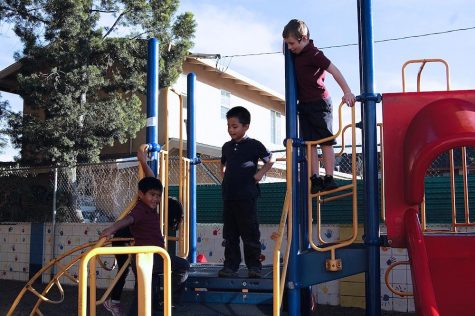Freely distributing iPads to students is ineffective
Interactive textbook on iPad provides interactive images and galleries
It is an indisputable fact that tablets have permanently transformed the way we absorb information. IPads’ user-friendly features and light weight make them worthy candidates as replacements for textbooks. In fact, according to Huffington Post, in 2013 the Los Angeles Unified School District (LAUSD) launched a billion dollar program to provide iPads to over 600,000 students in 38 school campuses in the coming years.
Although this is an impressive objective that promotes technological advancement in education, I believe that tablets should be slowly integrated into classroom curriculum instead of being freely handed out for student use.
Based on my experience looking through an iBook’s digital textbook with videos and interactive 3D images, it is true that iPads enhance students’ learning experience. However, while I do strongly agree that iPads are outstanding resources, not all students see its educational value.
IPads are not solely used for education the way textbooks are; they are marketed for entertainment purposes. The App Store holds thousands of apps for gaming and social networking. These capabilities that make the iPad so desirable also make them the greatest distraction to introduce to students.
The Huffington Post article “LA School iPad Security Breached In No Time By Students” reveals that in just a week of distributing iPads in a LAUSD high school, nearly 300 students discovered how to bypass the security settings to access social networking sites and listen to music. This security problem resulted in LAUSD officials rethinking their billion dollar initiative.
I also see a similar problem in a Glendale private school that also provides iPads for its grade schoolers. While tutoring the students after school, I noticed them sneakily use their iPads to watch videos and play games instead of focussing on homework. Until we find solutions to this problem, we should not hand out tablets valued at almost $800 for every single student.
IPads should be slowly introduced into classrooms during instructional time only so that teachers can monitor students’ usage. Students will also recognize the value of the device when they know they do not have unlimited time with it. I believe that districts should run trials with iPads on a small scale instead of largely distributing the tablets. Instead of handing out tablets and reprimanding students for not using them in a productive manner, district officials should educate teachers how to effectively integrate these devices into their curriculum.
Another way of ensuring that $1 billion goes directly to educational advancement is to invest the money to develop a tablet specifically tailored for student use. It is true that tablets transformed the way educational material is presented, but how much we learn depends on how we use them.








